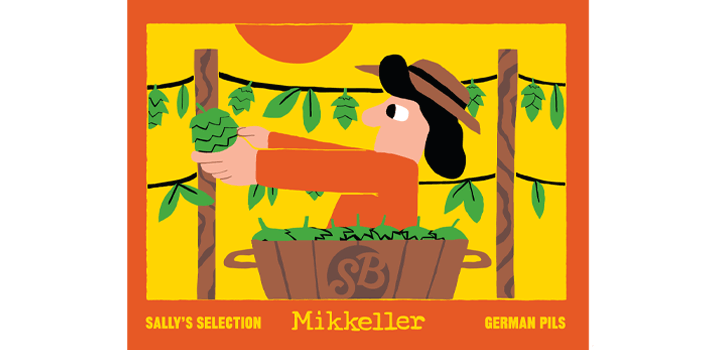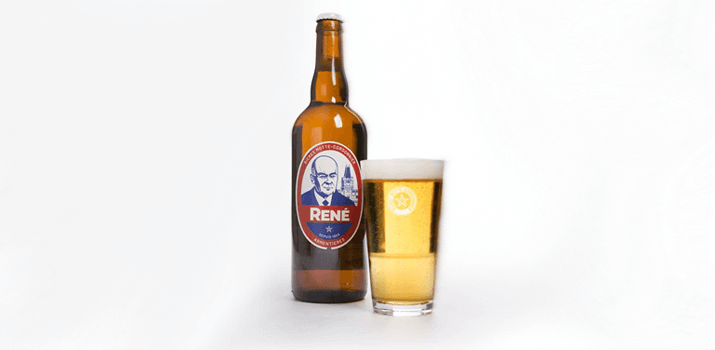Sanitation
The very first thing when it comes to brewing is making sure that everything--and we mean everything--is super clean. Nothing will ruin your day, and your brew, quicker than some bacteria or other undesirables getting into your beer. So, we're not even going to start this tour until we talk about sanitation.
The best way to clean everything--right down to your hands--is to use a food-grade cleanser like Star San to get every nook and cranny spotless. There are other powder or bleach-based cleaners available but they'll need a final rinse with something like Star San to make sure that there are no residuals left behind that'll affect your final product.
All great beers start with great sanitation. Got it?
Hot Liquor Tank
It's kind of in the name, isn't it? Brewing requires hot water. In the beer world, this hot water is referred to as hot liquor. Before the whole process can begin, brewers bring a certain amount of water up to its required temperature and hold it in a hot liquor tank. Industrial breweries have large, stainless steel kettles that they keep it in but homebrewers can use a large steel pot or an insulated cooler. Anything that will help retain the temperature.
Mash/Lauter Tun
As entertaining as sanitisation is, it's here where the fun of brewing really begins. Remember all that barley, wheat or other grain that is one of the main ingredients in beer? And remember how they're all steeped in hot water to extract all the necessary sugars? Well, all that's done here in the mash tun. The hot liquor from the hot liquor tank is poured over the grains in the mash tun and left to sit while the magic happens.
Again, a commercial brewery will have a massive stainless steel vessel for the mash. Homebrewers are fine to use another insulated cooler for this process but it'll require some special configurations for the grain bed. The lautering/sparging process (where water is drained or sprinkled over top to rinse out the sweet wort that results from the mash) can take place in the same mash tun which is better for homebrewers with limited space but a similar vessel, called a lauter tun, does the same job.
Brew Kettle
After the mash, the water that has been drained is full of all the sweet sugars that have been extracted from the grains during lautering or sparging. This sweet water is called the wort. The wort is put into a large brew kettle--which is as simple as a large pot on your hob at home--and here is where it goes through the boil. Pretty simple, really. Just boil the wort for about an hour.
Hop Bag
It's during the boil where the hops, glorious hops, are added. Especially when homebrewing or using whole-leaf hops, it's probably best to put them in a hop bag because they could get stuck when you ultimately have to drain the kettle. It's like steeping a big ol' bag of hops.
Wort Chiller
After the wort has been boiled and the hops have done their thing, the whole thing needs to come off the boil and get brought down to an appropriate temperature rather quickly. The best way to do this is by running cold water through copper tubing that has been submerged (after being sanitised, remember?!) in the wort. Connect one end to the cold water source and the other end to wherever you're draining it. Easy peasy.
Fermenter
It's time! Time to pitch the yeast. After the the wort has been cooled it's time to transfer it to its final resting place so the yeast can do their thing. Commercial breweries have humongous vessels that tower over the operation but the humble food-grade plastic bucket is just fine for at home. Just make sure that you've got a drilled lid because the whole fermentation process is a bit, shall we say, active and if there's nowhere for the gasses to vent off. Well, I think you can see where this is going...
So there ya go: the basic brewing process. Obviously after fermentation, the--what we now know as--beer, has to get racked off into whatever packaging has been decided on (bottle, keg, cask) before it can be served.
Thanks again for joining us at BHU. We took a bit of a hiatus but we hope you're ready to get back into learning about--and drinking--the world's best drink. See you next week when we talk a bit more about the brewing process and start thinking about creating our own homebrew recipe! See you then.





